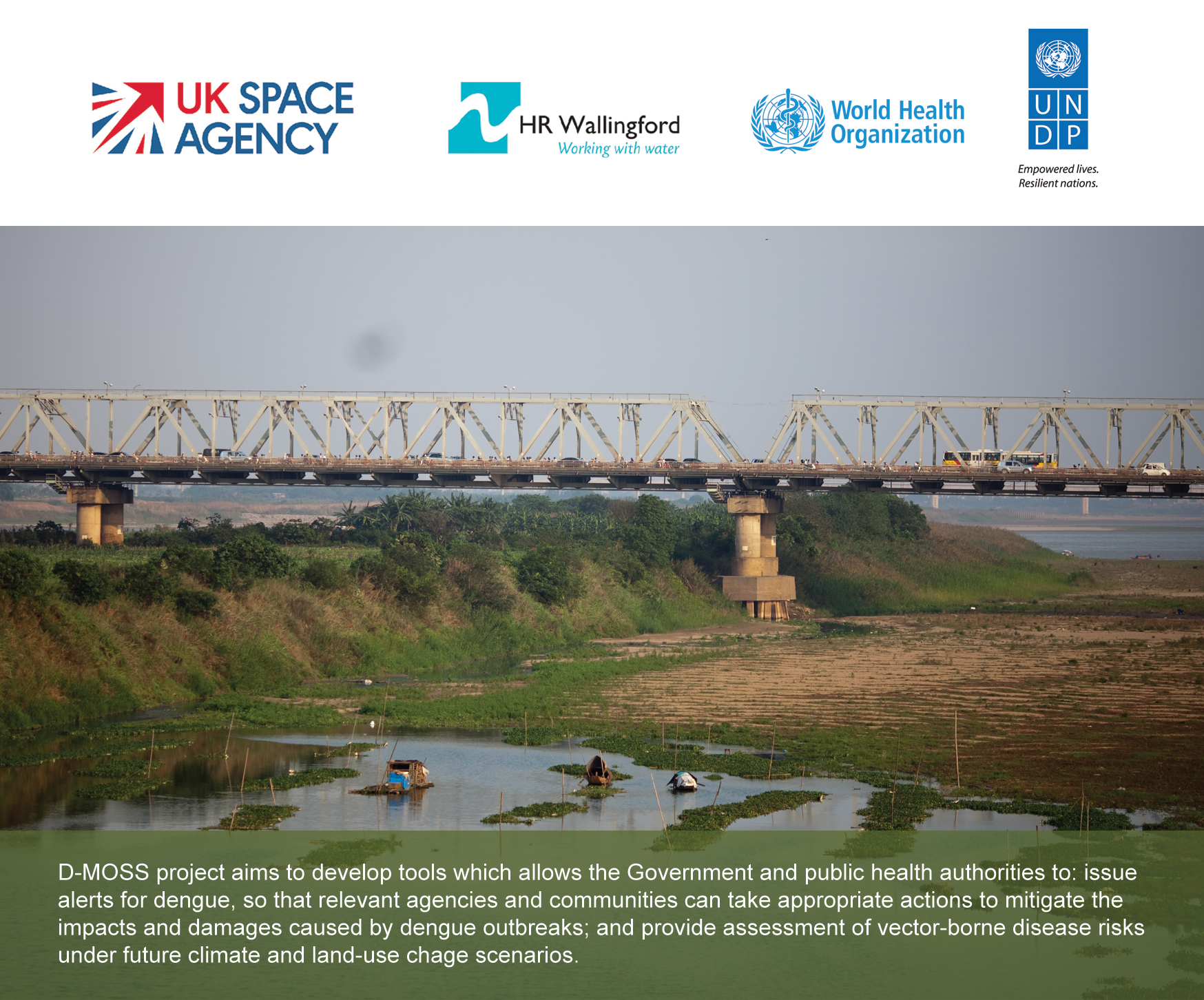An integrated early warning dengue system in Viet Nam
Photo: Shutterstock/UNDP
Project Summary:
In Vietnam there is currently no system in place to forecast the probability of dengue outbreaks. Since 2000, there has been an increase of over 100% in the number of cases of dengue fever in Vietnam due to the failure to maintain adequate control of the Aedes aegypti species of mosquito that spreads dengue fever. Considering the current regional trends in dengue epidemics, the setting up of a seasonal dengue forecasting system utilising Earth Observation (EO)- based information to provide probabilistic predictions of dengue outbreaks would greatly assist the Vietnamese Government to put cost effective early actions in place.
From a water resources perspective, seven of the nine major river basins that drain to Vietnam are transboundary in nature and it is estimated that some two-thirds of Vietnam’s water resources comes from neighbouring countries, making water management challenging. In recent years countries upstream of Vietnam have increased their water use and Vietnam is currently facing increasingly negative impacts from the water policies of upstream countries. The development of an EO‑based water availability system will help the Vietnamese Government to improve their water resources monitoring and management in transboundary river basins.
The dengue fever and water management challenges are similar in other countries in South Asia and the project has now been extended to cover Sri Lanka, Laos, Cambodia, Thailand, The Philippines and Malaysia.
Objectives:
To develop a suite of innovative tools that will allow beneficiaries to issue alerts for dengue fever (with a view to develop the same for Zika virus which is transmitted by the same mosquito species), and provide assessments of vector‑borne disease risk under future climate and land-use change scenarios. This will allow local communities to mobilise to pre‑emptively eliminate mosquito-breeding sites thus reducing incidents of dengue. In combination with better outbreak response, we expect the project to contribute towards a reduction in dengue incidence over the project lifetime.
Expected results:
The D-MOSS project is developing a forecasting system in which Earth Observation datasets are combined with weather forecasts and an hydrological model to predict the likelihood of future dengue epidemics up to eight months in advance.
The early warning system includes a water availability component. Although water availability directly impacts dengue epidemics due to the provision of mosquito breeding sites, it is rarely accounted for in dengue prediction models. The water availability forecasts are fed into statistical forecasting models of disease incidence, which integrate a range of other covariates important for dengue transmission (e.g. number of dengue cases, land-cover, precipitation and temperature).
Project locations:
Ha Noi, Dak Lak, Dong Nai and Khanh Hoa Province
D-MOSS in the News:
A worker sprays chemical insecticide in an area with a high risk of dengue fever in Hà Nội. — VNA/VNS Photo Dương Ngọc
Satellite-based forecasting system launched to fight dengue fever
As published in Viet Nam News on 20 March 2019
HÀ NỘI — A dengue fever forecasting Model Satellite-based system (D-MOSS) was launched yesterday in Hà Nội following a joint effort by the United Nations Development Programme (UNDP), the World Health Organization (WHO) and a consortium led by HR Wallingford. The project, which is funded by the UK Space Agency’s International Partnership Programme, creates an early warning system for Việt Nam, first piloted in Hà Nội, Đắk Lắk, Khánh Hoà and Đồng Nai. Read more
British-funded dengue forecasting system in Vietnam aims to curb mosquito-borne virus
As published in The Telegraph on 20 March 2019
A British consortium funded by the UK Space Agency on Tuesday launched a pioneering dengue forecasting system in Vietnam, in the hope of curbing the spread of the deadly mosquito-borne disease that has afflicted the south east Asian nation for generations. The “D-MOSS project” led by HR Wallingford, a British civil engineering and environmental hydraulics consultancy, uses a combination of satellite information, weather forecasting, and historical data on previous outbreaks to create an early warning system for potential dengue danger zones. Read more
First regional workshop to discuss the extension of a dengue fever forecasting system from Viet Nam to other Asian countries
Ha Noi, 18 November 2019 – The United Nations Development Programme (UNDP), the World Health Organization (WHO) and the Ministry of Health in Vietnam, in partnership with a consortium led by HR Wallingford, organized a regional-level workshop to share information on a project to develop a dengue fever forecasting system. The Dengue Model forecasting Satellite-based System, known as D-MOSS, is being developed as part of an innovative inter-agency project funded by the UK Space Agency. D-MOSS is the first fully integrated dengue fever forecasting system, incorporating Earth Observation (EO) data and seasonal weather forecasts, to issue warnings on a routine basis. D-MOSS is a web-based system that can forecast dengue outbreaks up to six months in advance. Read more

 Locations
Locations






